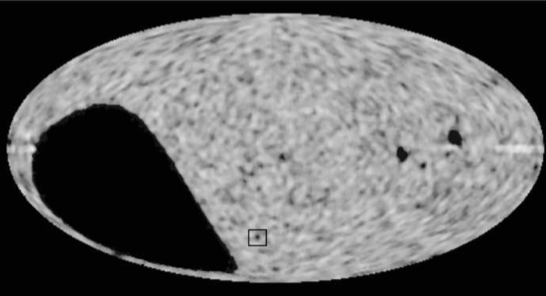August 24, 2007Looking at the SkyMy soon-to-be first-grader Piper has fallen in love with Google Earth. She has resolved to start every morning by exploring the planet. The other day she spent the afternoon exploring the new Google Sky feature. "I discovered the Andromeda Galaxy," she explained. In grown-up astronomy news today, Reuters is reporting on work by UMN astronomers Rudnick, Brown, and Williams that has detected "a gaping hole in the universe." In Piper's spirit of naive exploration, let's take a look at where this hole is, and how big it is... Where is this Hole? Astronomers around the world have been trying to explain every anomaly in the WMAP data - are the various bumps due to local noise, or are they real variations on the extragalactic scale? One cold spot in the data in particular was interesting to Rudnick, outlined by a square below:  This picture is from the Rudnick, Brown and Williams paper. In their paper they find that the spot matches up with a gap in the density of radio-visible galaxies - a coincidence they calculate would be very unlikely to occur by chance or noise, and more likely to be explained by a genuine hole in the universe. So how big would the hole have to be to explain the data? Rudnick estimates 140 megaparsecs - that is, 450 million light years. That is a particularly large bubble, considering that the entire visible universe is about 15 billion years old, that is, 15 billion light years in radius. Posted by David at August 24, 2007 09:59 AMComments
Post a comment
|
| Copyright 2007 © David Bau. All Rights Reserved. |